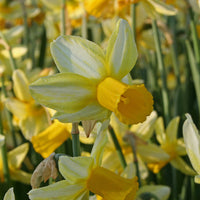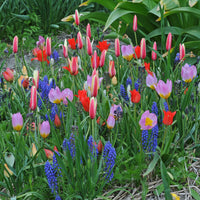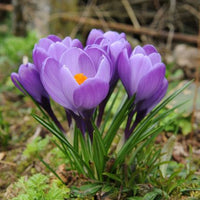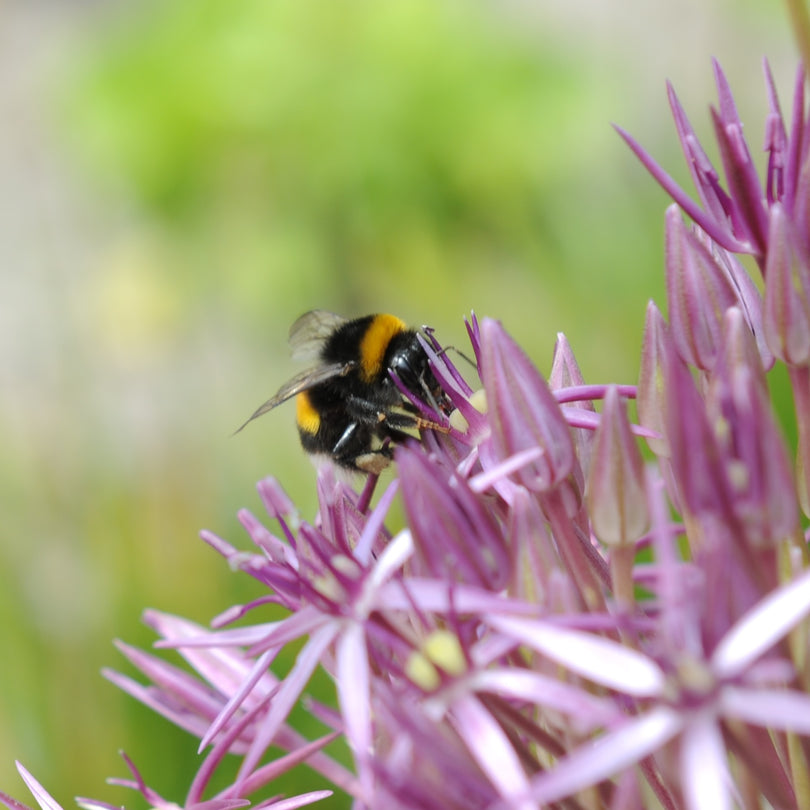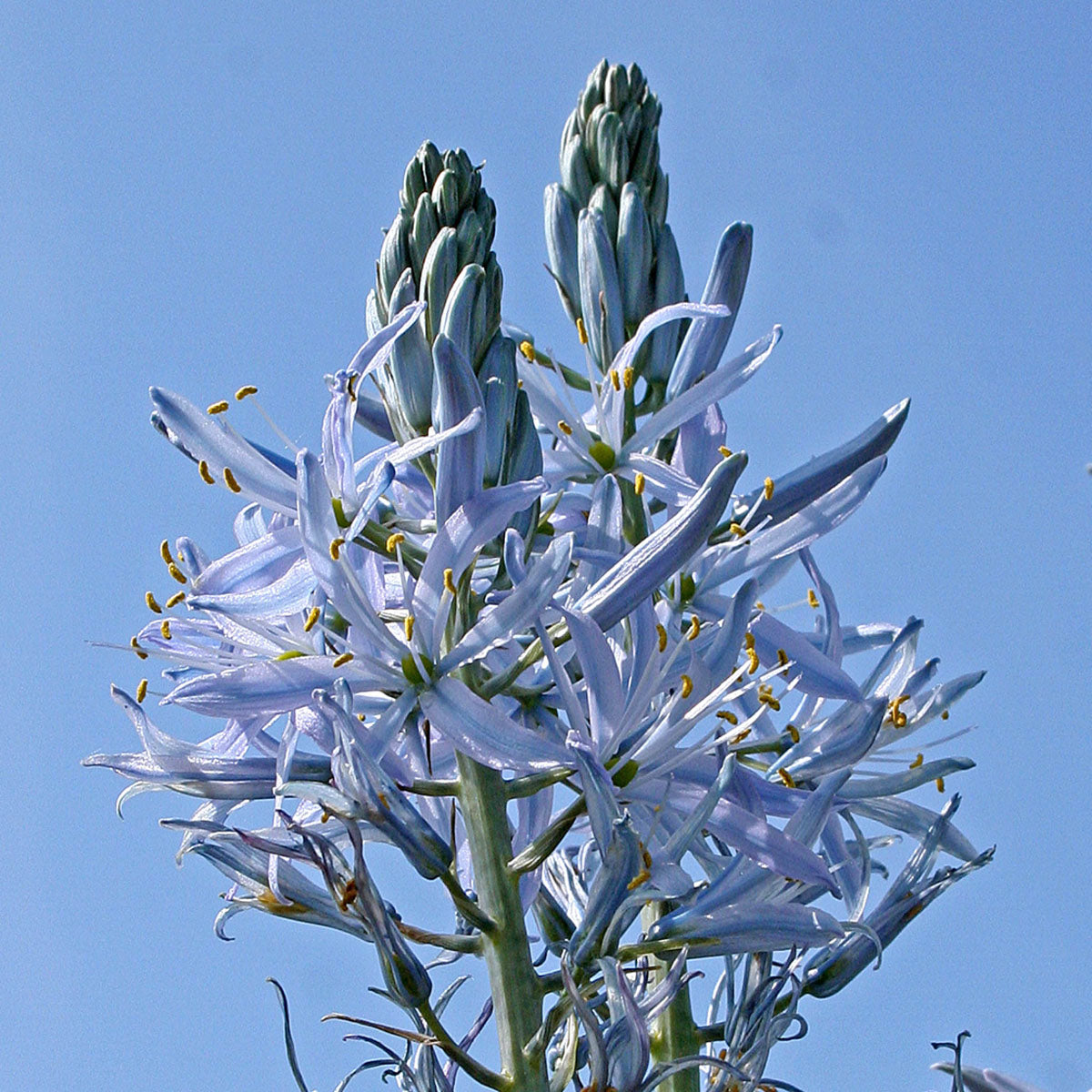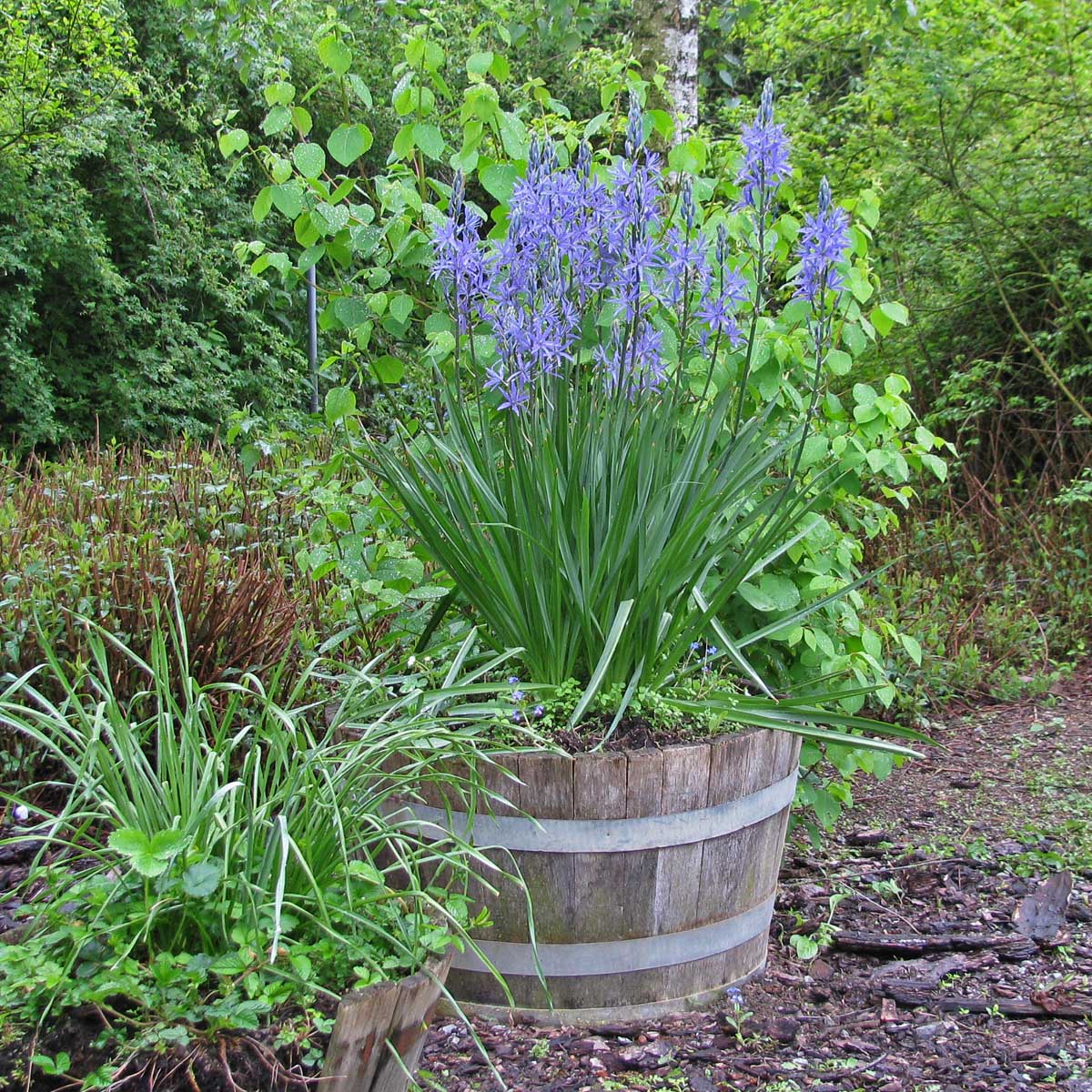- General
- Different types of Camassia
- Planting Camassia
- Caring for Camassia
- Soil type and fertilization
- Location
- Uprooting and transplanting Camassia
- Is the Camassia edible?
General
The Camassia is native to the western part of North America. In large parts of what used to be called the Wild West, the Camassia is a common plant. The Camassia owes its nickname 'Prairie Lily' to this origin.
In the Netherlands it has been cultivated for over 100 years, but it was the German botanist Max Leichtlin who introduced it to Europe. The Camassia leichtlinii owes its name to this passionate botanist who quickly realized that the Camassia would do well in our European climate.
But despite its stunning blue colour and excellent garden properties, Camassia remained a relatively unknown bulbous plant that was only available from specialist seed and flower bulb houses. It was only when the natural garden, or the naturalisation garden, began to gain popularity that Camassia received the attention it deserved. Rightly so, because this indestructible flower bulb, with its unique colour, never disappoints.
Nowadays it is simply part of the garden and, in addition to the wilder gardens, it is also frequently used in more formal gardens, in public gardens and in park plantings.
The Camassia certainly also owes part of its success to the Gebroeders Hulsebosch. At their nursery in Schagerbrug in North Holland, the brothers Frank and Cock have been busy growing, promoting and marketing the Camassia for over ten years. Together with their sons Nick and Ron, they ensure that the various types of Camassia are available in very good quality for the flower bulb trade.
Just like me, Frank is completely crazy about the Camassia. It is such a grateful flower bulb for the garden, says Frank. At our nursery, the Camassia is also so easy to grow, Frank continues, always grows well, no crop protection products needed at all and hardly any problems with diseases and pain. The only thing is to watch out for damage to the Camassia bulbs during harvesting and processing, but we have mastered that quite well by now.
The different types of Camassia
The most common Camassia is the Camassia leichtlinii of which the Camassia leichtlinii Cearulea is the most cultivated and traded species. This Camassia leichtlinii is also available in white: the Camassia leichtlinii Alba. There is also the Camassia leichtlinii Sacajawea , this Sacajawea has, in addition to its beautiful white color, an even greater ornamental value because of its beautiful silver-edged leaves that make the plant look like prairie grass.
The Camassia leichtlinii Semiplena is the white Camassia with double flowers, this is the Camassia that blooms the longest, partly due to the double shape of the flowers.
New is the pink variant of the Camassia; the Camassia leichtlinii Pale Pink. A special color among the Camassias but in my opinion there is still some room for improvement of the pink.
The Camassia cusickii is the beautiful light blue colored Camassia. Especially the Camassia cusickii Blue Heaven has a phenomenally beautiful soft blue color that is not found in any other spring flowering flower bulb.
There is also the Camassia quamash, formerly traded under the name Camassia esculenta. Less conspicuous in the garden but for naturalisation one of the best bulb plants. If you have a natural, or a piece of naturalised, garden to please bees and other insects, you should definitely plant this Camassia. Bees are crazy about the Camassia quamash.
[widget magento]
The bulb of the Camassia
Don't be fooled by the appearance of the Camassia bulb, it is certainly not the prettiest. In fact, it is just an ugly flower bulb. This is because the bulb of the Camassia hardly has a skin like a Tulip, Hyacinth or Allium does. The Camassia comes out of the ground almost stark naked and at the slightest touch the bulb secretes a kind of resin that forms brown crusts on the bulb.
The Camassia bulbs that Fluwel receives also have these brown crusts that make them look damaged. Don't doubt the quality, they are doing just fine. I have seen many Camassia bulbs that were so ugly that even I began to doubt them, but when I cut the bulbs in half, they always turned out to be perfectly healthy again. It seems as if Camassia bulbs are never sick, no matter how battered they look.
Planting Camassia
Plant the Camassia at a depth of about 15 centimeters with 10 centimeters of soil on top of the bulb. Do not plant them too close together, they will really come back for years and every year there will be a little more. If you plant them together like a Tulip to form a tuft, they will soon crowd each other out.
Give them space, plant the bulbs at least 30 centimetres apart. The Camassia also looks great in a plant border where you plant a Camassia bulb every few metres. Over the years they grow into beautiful tufts that give the border a cool blue or warm white colour at the end of April, beginning of May.
Caring for Camassia
The Camassia, like the Narcissus, could just as well be called a perennial as a flower bulb. She is really a tough guy that requires almost no care. Plant her somewhere in the garden and leave her alone. Every year she will bloom happily and spoil the bees with her pollen and nectar.
Soil type and fertilization
You often read that the Camassia likes a moist, somewhat heavier soil. My experience is that the Camassia is not at all picky about soil type. In my garden they do very well on fairly dry sandy soil and I see them everywhere, in any normal garden soil, growing and flowering well. As for fertilizing, you don't have to worry about the Camassia either. If they are in reasonably humus-rich soil where your other plants and shrubs also do well, the Camassia will not lag behind and will not ask for extra nutrition.
Location of the Camassia
The Camassia does very well in both full sun and shade. I prefer to plant it in a spot where it has some shade for a good part of the day. The Camassia flower does not last very long, especially not in full sun. If it is in a bit more shade, you can enjoy its flowers much longer. I also think the beautiful blue of the Camassia comes into its own better in the shade. Half under deciduous trees is ideal. The moment the trees start to get a bit of leaf and start to provide light shade, the Camassia starts to bloom.
Furthermore, there are few tips and pitfalls when planting this grateful flower bulb. The Camassia is simply one of the easiest flower bulbs where little can go wrong. Just try it once, you will enjoy it for years.
Uprooting and transplanting the Camassia
The Camassia does not need to be dug up and does not need any special treatment to flower well again next year. She feels, just like the Narcissus, most at home in the ground.
If you still want to dig up your Camassias because you want to give them another spot in the garden, or because they have become too thick, that is of course perfectly possible. As soon as the leaves have died, somewhere in July, you can remove the bulbs. Be careful with the bulbs, they are sensitive to damage which causes the bulb to bleed. You can carefully break off clusters of bulbs, that is not harmful. If you do not plant the bulbs back in the garden immediately, store them airy and dry. They do not need a special temperature, summer temperatures are fine as long as the bulbs are dry and airy. During the summer or in the fall you can plant the Camassia bulbs again.
Is the Camassia edible?
If you have ever heard that the bulbs of the Camassia are edible, you were referring to the Camassia quamash.
This small Camassia grows wild in large parts of western North America. It was eaten extensively by the Indians. The small bulb of the Camassia quamash is very strong and durable, which made it easy to store and eat during the winter months. Especially in the northern part of the Wild West, where winters are long and cold, the Camassia quamash was a welcome addition to the winter menu.
I hope to read or hear somewhere how the Indians prepared the bulbs of the Camassia quamash because I think it would be fun to try it sometime.

